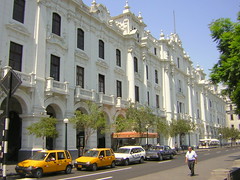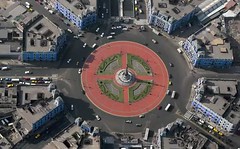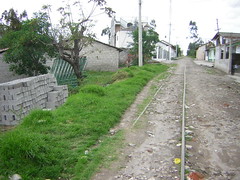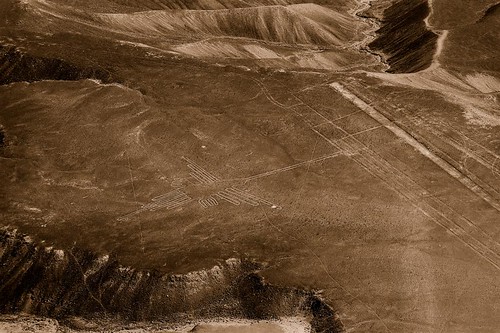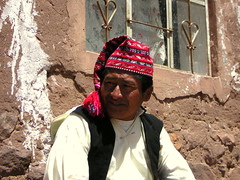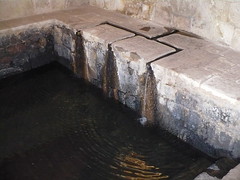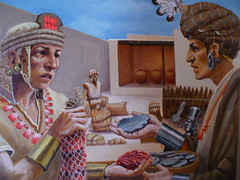An Andean Tradition: Knitting with Alpaca
Kate Robertson shares her experiences in the Andean region of Ancash and the story of an Alpaca knitting project she helped get off the ground.
“I am not a knitter and I never have been. In fact, as a child, my mom used to knit sweaters that were itchy and bulky. Chicago winters were brutally cold so despite the discomfort, I wore the sweaters. At that time, I was disinterested in what materials she was using. All I knew is that they were prickly and scratchy. It wasn’t until I joined the Peace Corps that my perception of knitting and wool began to change.
I was placed to live in a small Andean community in the region of Ancash. It was the stepping-stone into the world famous Huayhuash Mountain range and only a few hours from the beautiful city of Huaraz. To make an otherwise long and complicated story short, I began working with a group of women that had an informal knitting cooperative. I began advising them on how they could create a more effective organization and by the end of my two years in Peru, they were knitting high-end accessories made of the highest quality Alpaca fiber, something they had never seen or touched in their lives.

During my time in the Andes, I developed a huge appreciation for their skills as knitters and strength as mothers and breadwinners. These women, who spoke Quechua to their mothers and Spanish to their daughters, were extremely talented artisans. They told stories of learning to knit at the young ages of five or six. It was a tradition, a way to keep themselves and their families warm during the cold evenings without heat. It wasn’t uncommon for the women to shear and hand-spin sheep wool or purchase synthetic yarns in the local store. Ironically, their access to alpaca fiber was limited despite the close proximity of alpaca farms. They all knew, however, that alpaca was the warmest material around.
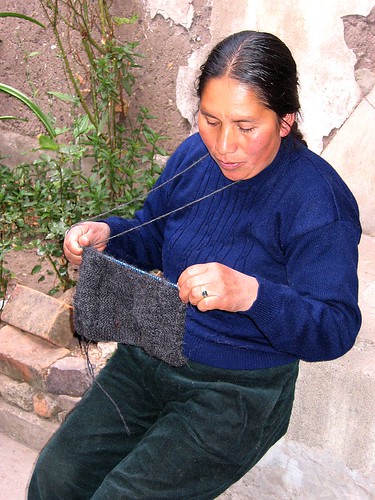 I heard so much about the alpaca that I decided to experiment. We purchased some and the women were shocked at the softness, sheen and pure beauty of the fiber. And, as a bonus, the shawls and throws they knit kept them super warm and cozy! I later learned that alpaca fiber is considered eco-friendly because of the way that alpacas are raised and because their fiber is not full of harsh lanolin oils. Additionally, alpaca is hyper-allergenic, will not pill, and will last a lifetime. Sound better than cashmere? It is! For more information on alpaca fiber, click here.
I heard so much about the alpaca that I decided to experiment. We purchased some and the women were shocked at the softness, sheen and pure beauty of the fiber. And, as a bonus, the shawls and throws they knit kept them super warm and cozy! I later learned that alpaca fiber is considered eco-friendly because of the way that alpacas are raised and because their fiber is not full of harsh lanolin oils. Additionally, alpaca is hyper-allergenic, will not pill, and will last a lifetime. Sound better than cashmere? It is! For more information on alpaca fiber, click here.
Since returning from Peru, I’ve continued to work with the women that I met there. It is my goal to share the skills of the women and the beauty of alpaca with the rest of the world. And, I should mention that I completely fell in love with Peru! I’ve developed a small, fair trade business, Mayu (river in Quechua) that sells the products we created together.
If you find yourself ready to trek the Huayhuash Mountains or if you are looking for a day trip off the beaten track, take a visit to the area around Chiquian, the “Espejito del Cielo”. You will have the opportunity to visit with women spinning wool or knitting sweaters on almost every corner you pass. And if you are interested, I’m sure they’d be happy to teach you how to knit!
To help spread the word and learn more about Peru, join Mayu on Facebook, read our blog or contact us at info@shopmayu.com.
Tags: alpaca, ancash, chiquian, huaraz, huayhuash, traditions, weaving



